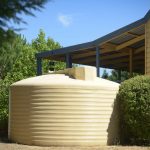Rotational Moulding Colouring P.2
In the first part of our blogs on Rotational Moulding Colouring, we looked at the importance of pigments and their role in making poly tanks. This post will look at how to use (or not use) pigments optimally
Pigments may not always be completely suitable for rotational moulding and many factors need to be taken into consideration: the environment, contamination of food and water, shrinkage and heating and cooling times.
For a pigment to be suitable for rotational moulding it needs to possess certain properties. It needs to be safe to use. This is particularly important when considering articles that come in contact with food or water. There is also the question of environmental effect when the article has reached the end of its useful life. During processing the pigment needs to be thermally stable, and in the final application it needs to resist fading. They need to be “light-fast”. Pigments may also have negative effects on polyethylene. If they are poorly dispersed the resulting concentrated areas of pigment may cause embrittlement of the polyethylene.
Due to their nature, pigments can affect the rate at which the material heats and cools. The result is that optimum cooking and cooling times may differ from colour to colour. Different pigments may also affect shrinkage to varying degrees. This may be an important factor when tight dimensional tolerances are required. Some organic pigments increase the crystallization rate by acting as nucleating agents. They may, as a result, contribute to warpage and brittle behaviour.
The ability of pigments to absorb radiation from the sun may have another unwanted outcome, a change in dimensions. Radiation absorbed by a pigment may be converted into heat and raise the temperature of a moulding. This, in turn, leads to expansion. Such expansion may lead to increased stress in a moulding and reduce its useful life. Other unwanted outcomes may be reduced rigidity and increased creep.
The choice of pigment used for colouring polyethylene can play an important role in the performance of mouldings.
Although this blog post looks at the risks associated with pigments, they can often be useful in the creation of poly tanks, and the next article will look at how to incorporate them into polyethylene once the risks have been assessed.




